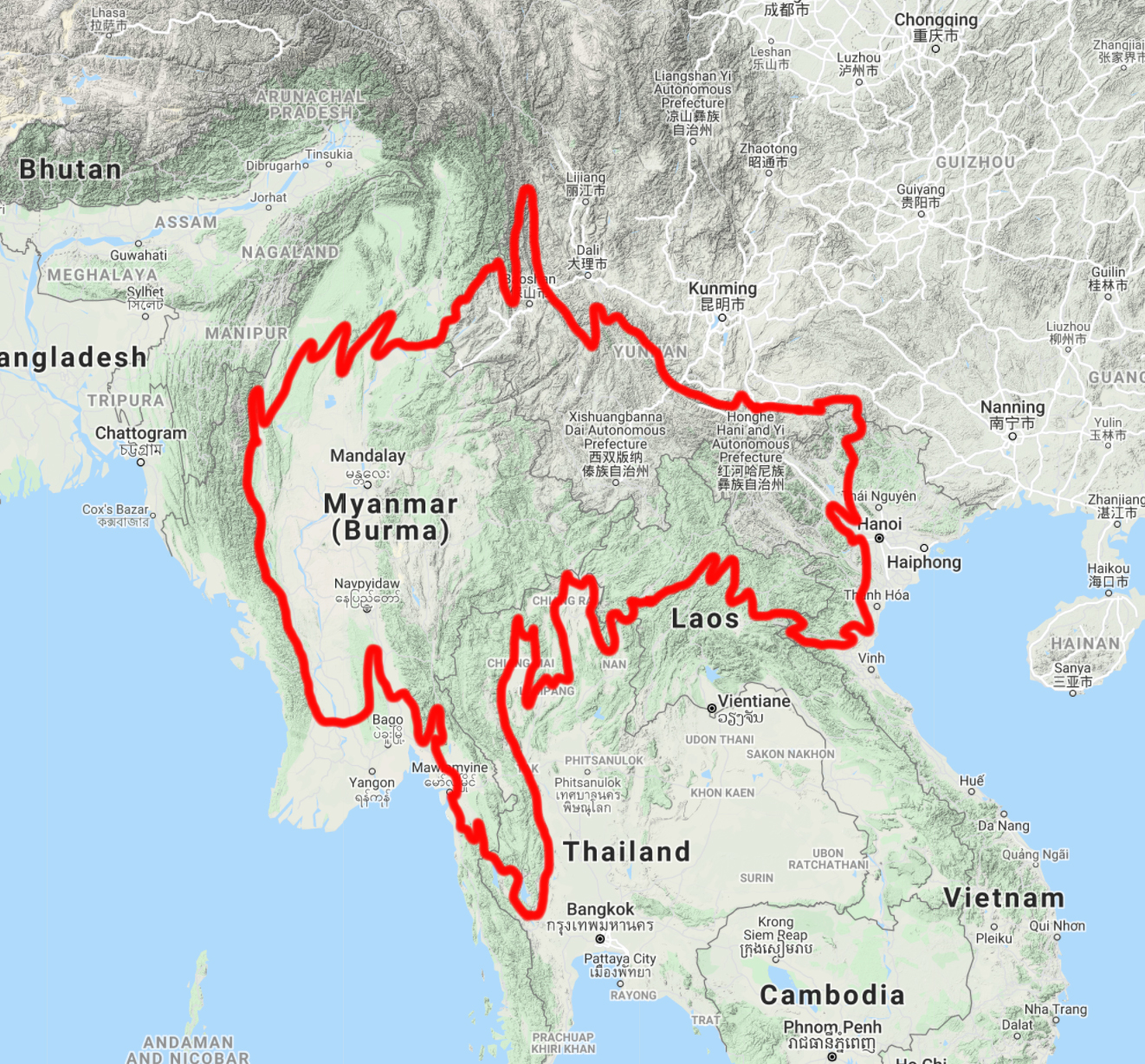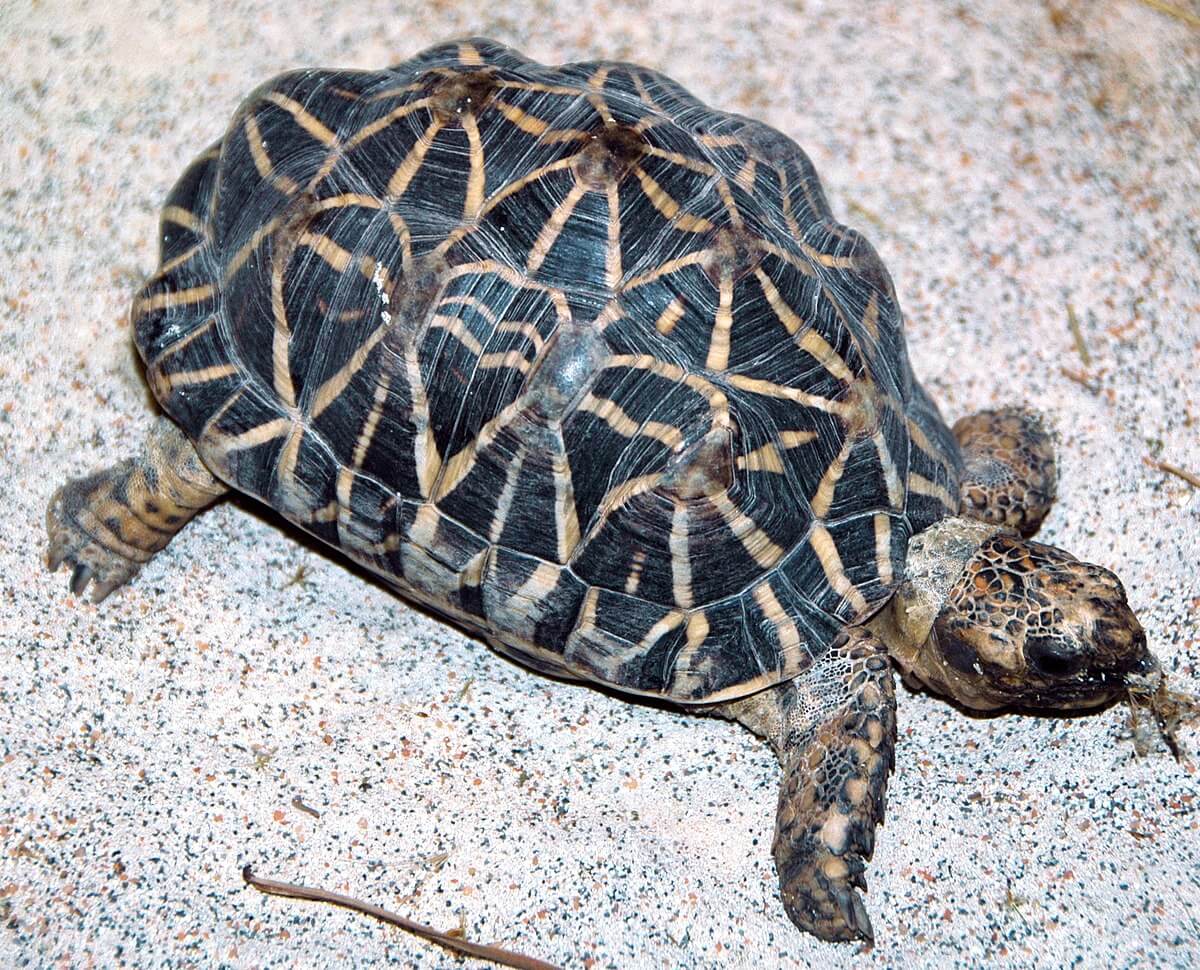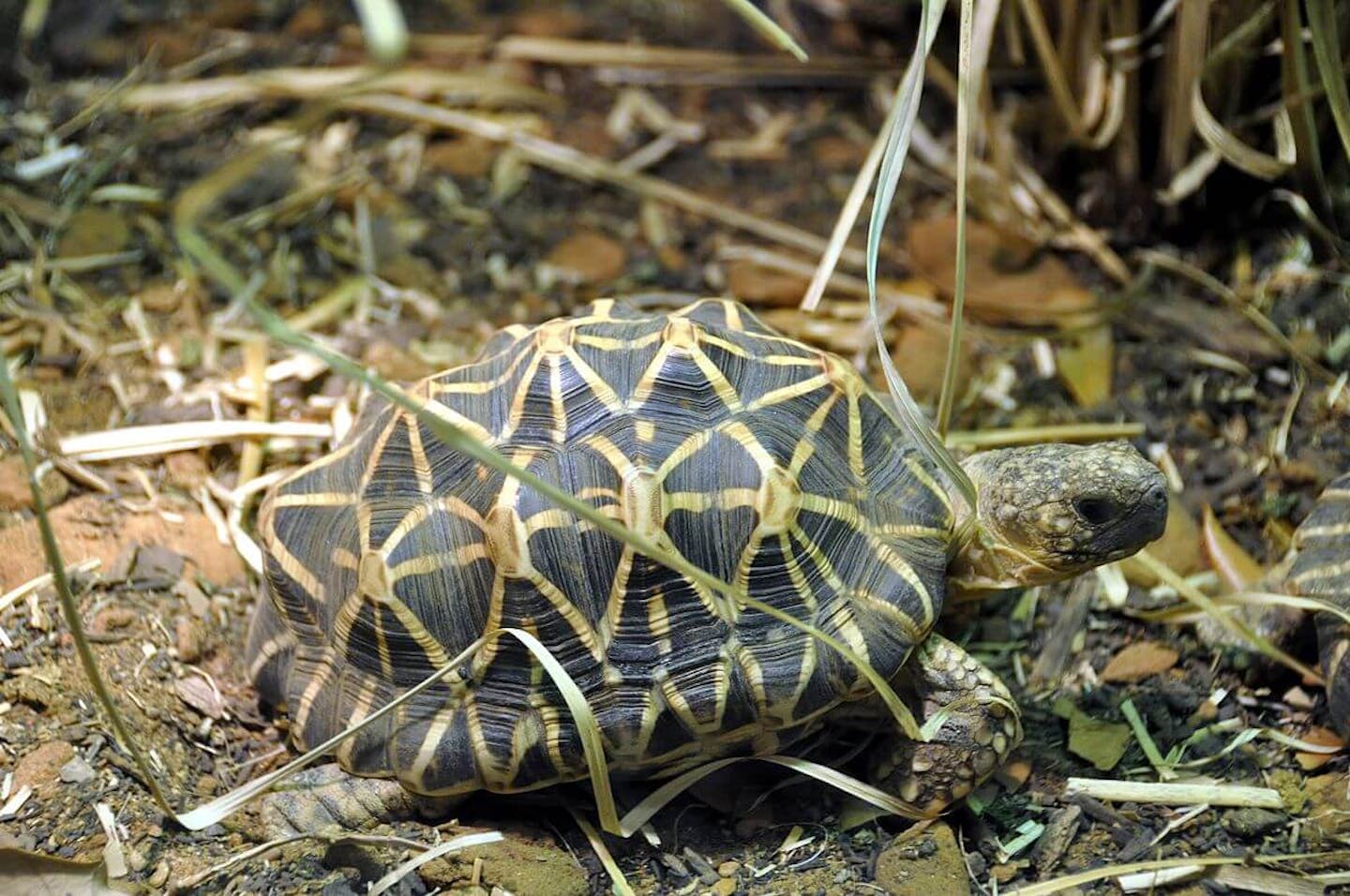Burmese star tortoise: the stunning conservation success story in Myanmar
- Nature Conservation
- Land Conservation
- Iconic Species
- Wildlife
- Reptiles
- Southeast Asian Forests
- Indomalaya Realm
One Earth’s “Species of the Week” series highlights an iconic species that represents the unique biogeography of each of the 185 bioregions of the Earth.
The harsh, dry forests of Myanmar are surprisingly home to the rarest and what many consider the most beautiful of all star tortoises. Named after the distinctive yellow radiating patterns on its black, domed shell, the Burmese star tortoise (Geochelone platynota) consumes a variety of grasses and leaves, helping its arid ecosystem bloom.

The Burmese star tortoise is the Iconic Species of the Irrawaddy & North Indochina Mixed Forests Bioregion (IM11).
A star personality
A medium-sized tortoise, Burmese star tortoises grow to an average size of around 26-30 centimeters (10-12 in). Females tend to be larger than males and have the same brilliant pattern and coloring.
The Indian star tortoise is a close cousin to the Burmese. They can be easily distinguished as Burmese star tortoises have yellow heads and legs with some darker patches of color, while Indian stars tend to be more spotted-looking.
“Personality” -wise, when interacting with humans, Burmese star tortoises are typically less shy and livelier than the Indian star tortoises. Researchers associate Burmese as being active, intelligent, personable, and responsive, each having its own unique characteristics.

Dry forest gardeners
Little is known about Burmese star tortoises’ behavior in the wild. They have been observed active during the day, especially in the mornings and afternoons, despite their habitat's warm temperatures exceeding 37°C (100°F) in the summer.
Over 90% of the Burmese star tortoise’s diet consists of greens rich in fiber. Consuming coarse leaves, weeds, and mixed grasses in such a dry environment helps the vegetation regrow rather than wither in the heat and parched landscape.
%20at%20Minzontaung%20protected%20forest%20shutterstock_1902212758.jpg)
Almost extinct
Critically endangered in conservation status, the Burmese starred tortoise’s fall and comeback are both due to human activity. Habitat loss and illegal collecting for the pet, medicine, and food trade all play a part in the tortoise’s population decline.
According to the Turtle Survival Alliance, the Burmese star tortoise was extinct from the wild in the mid-2000s. However, efforts by the Minzontaung Wildlife Sanctuary (MWS), Lawkananda Wildlife Sanctuary, and Yadanabon Zoo have turned into one of the greatest conservation achievements worldwide.

Conservation comeback
From an original conservation group of 200 individuals, the Burmese star tortoise population has since grown to over 14,000 tortoises. The program began by breeding the star tortoises in large numbers and then reintroducing them to the wild.
It has since expanded into translocating nests into the wild. Eggs are reburied in the sanctuaries, and hatchlings start their lives in nature independently. So far, the survival rate is about 50%.
In addition, awareness about the species has spread, resulting in further preservation efforts. The Convention on International Trade in Endangered Species of Wild Fauna and Flora (CITES) moved the Burmese star tortoise to the most restrictive protections in March 2013.
While there is still more work to be done, as only 1,000 Burmese star tortoises have been reintroduced into their habitat, it is nonetheless a huge conservation success story. Despite nearly losing a species, conservation and restoration efforts work and can bring back wildlife to their rightful “star” status.
Learn how you can help make another wildlife conservation success story possible.
Explore Earth's Bioregions


